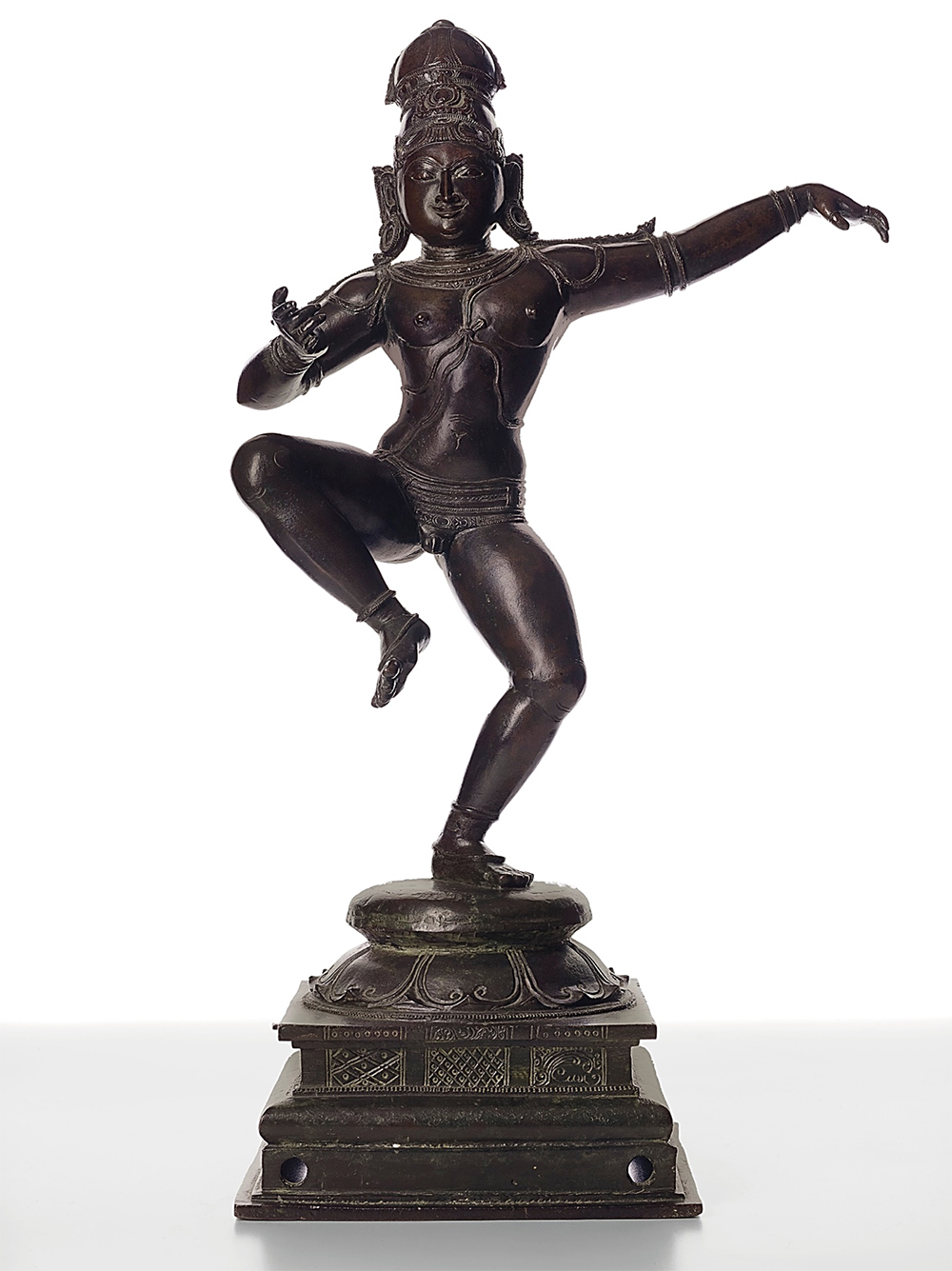
The Boy Krishna Dancing, circa 1500–1600, southern India, bronze, Lent by a New York collector, H. 68.5 cm
Verbal Description
Hello, my name is Julie Desai. I am a community partner of the Cincinnati Art Museum. I will be reading the verbal description for The Boy Krishna in Beyond Bollywood: 2000 Years of Dance in Art.
The Boy Krishna Dancing is a bronze sculpture dating from circa 1500 to 1600. It is from southern India. It was lent by a New York collector.
The Boy Krishna Dancing sculpture is bronze and measures 68.5 centimeter in height. The patina on the figure is a dark brown color. It is not shiny. Krishna appears to be young with a slim torso, arms, and legs. He wears an elaborate multitiered domed crown and large earrings. He has a slight smile on his face and a small chin dimple. Around his neck are a series of what appear to be necklaces with long tails that extend down his bare chest. His left arm is extended straight out, his wrist is bent with a down-facing palm. His right arm is bent at the elbow and raised to chest height. His right palm is turned up and is open. Krishna balances on his left leg which splays out and bends at the knee. His right leg is also bent at the knee and splayed out. The right foot almost touches the inside of the left thigh. He is standing on a multitiered platform, the top of which resembles a lotus blossom.
Label Text
Hello, my name is Julie Desai. I am a community partner of the Cincinnati Art Museum. I will be reading the label for The Boy Krishna in Beyond Bollywood: 2000 Years of Dance in Art.
The Boy Krishna Dancing is a bronze sculpture dating from circa 1500 to 1600. It is from southern India. It was lent by a New York collector.
A mischievous young Krishna often dances in impish glee, stealing not only treats, but also the adoring affections of all who encounter him. The small bronze sculpture positioned nearby depicts the moment Krishna is caught stealing a tasty butterball by a young neighbor woman in their cowherd village. To pardon himself, Krishna dances for the woman. She experiences the profound love for this child and for the divine that he embodies, which is the core of Krishna worship, or bhakti (self-surrendering devotion).
Here, a much larger image of Krishna lacks the butterball but shares the same gracefulness and equipoised energy as the other. This statue must have been a significant cult icon, often dressed in clothing and jewelry for religious precession. The holes in its base allowed it to be secured to a chariot and carried through the streets. In both bronze sculptures, Krishna embodies both childhood glee and the profundity of the divine.
